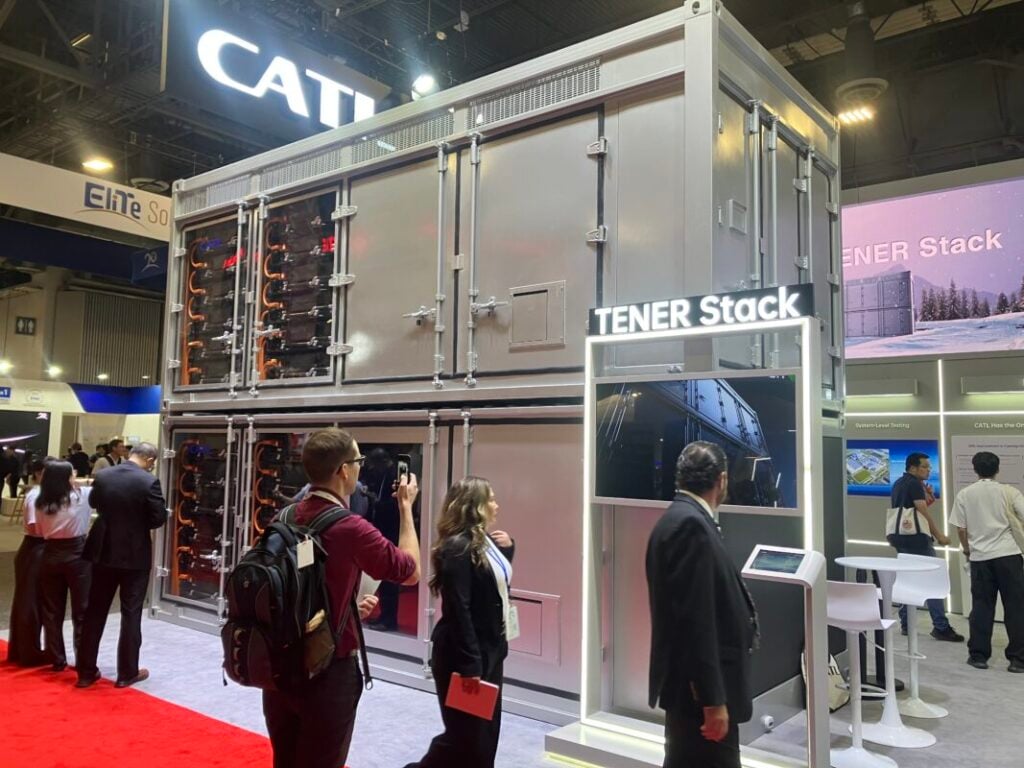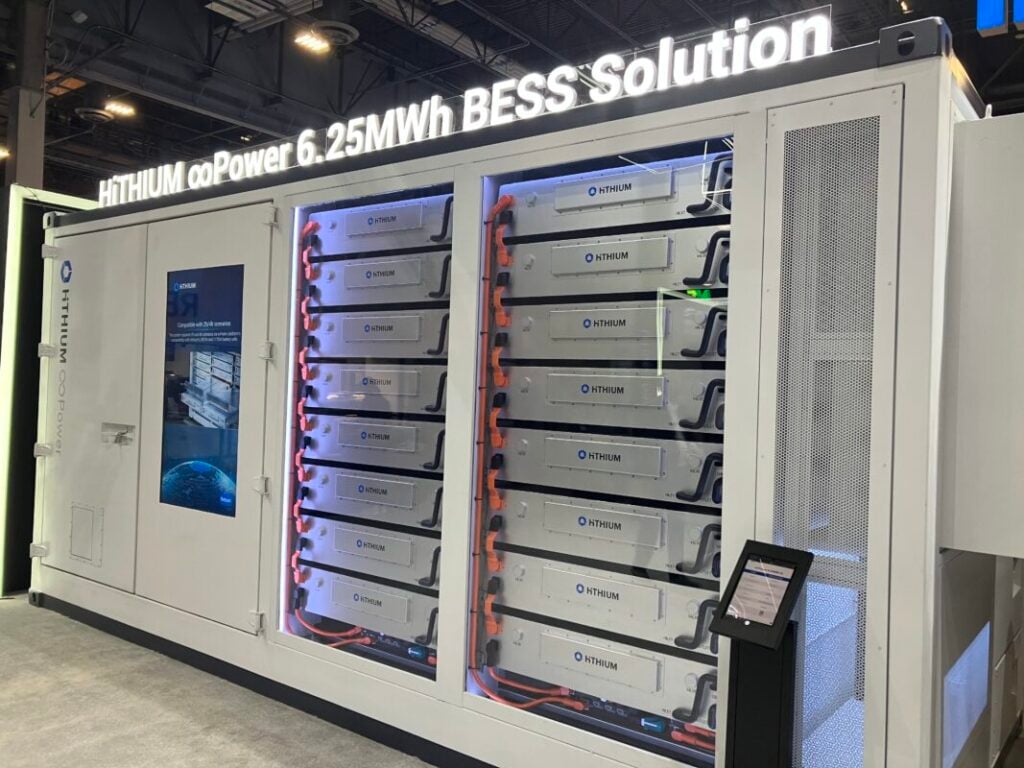

9 October: This article was updated after a statement from Hithium was received.
Lithium-ion OEM Hithium’s stalled Hong Kong listing amidst a lawsuit from larger competitor CATL may point to wider industry trends, with an increasingly competitive and larger battery industry meaning ever higher stakes.
Hithium misses deadline to go public
On 25 September, 2025, the H-share prospectus of Hithium became invalid on the announcement board of the Hong Kong Stock Exchange. Exactly six months had passed since it submitted the application on 25 March, and the Exchange now categorises Hithium’s filing as ‘lapsed’ (with ‘listed’ and ‘active’ being the other two categories’).
This marks the second time Hithium has missed the door to the capital market, following the failure of its A-share IPO in 2023.
Try Premium for just $1
- Full premium access for the first month at only $1
- Converts to an annual rate after 30 days unless cancelled
- Cancel anytime during the trial period
Premium Benefits
- Expert industry analysis and interviews
- Digital access to PV Tech Power journal
- Exclusive event discounts
Or get the full Premium subscription right away
Or continue reading this article for free
The invalidation of Hithium’s prospectus comes amidst the concentrated outbreak of multiple pressures for the company, including a CNY 150 million (US$21.1 million) lawsuit claim from Contemporary Amperex Technology Co., Limited (CATL), the bankruptcy of its major US client Powin, and high accounts receivables.
After this article was published, a spokesperson from Hithium gave as the following statement, explaining that a listing being ‘lapsed’ happens often and does not mean it has failed, and that the company will resubmit its application shortly.
“We would like to share an update regarding the progress of our Hong Kong listing,” they said.
“At present, all related work is proceeding smoothly and in full accordance with the required processes.
Please note that our Hong Kong listing application is currently shown as ‘lapsed’ due to the expiration of its validity period. This is a standard procedural step within the Hong Kong Stock Exchange (HKEX) process and has recently been a common occurrence among listing applicants.”
“The temporary ‘lapsed’ status does not indicate that the listing plan has been terminated or suspended.
“Under HKEX regulations, once an application is marked as ‘lapsed’, the company updates its documents and the Exchange treats it as a continuation of the original application. We are actively preparing the necessary materials and expect to complete the resubmission shortly. Therefore, this temporary status will not impact the overall progress of our listing plan.”
CATL claims ‘high degree of technology overlap’
In June 2025, CATL sued Hithium and eight defendants including its management member Wu Zuyu on charges of unfair competition. CATL alleged that Hithium had a high degree of overlap with CATL in terms of technical patents or cell parameters, and claimed CNY150 million in compensation.
In July 2025, according to a report by China Business News, Feng Dengke of Hithium was arrested for infringing commercial secrets, which was said to be related to a patent for composite current collectors.
In August 2025, Hithium made statements twice, revealing the cruel law of the jungle in the energy storage industry. On the evening of 4 August, Hithium released a “Solemn Statement on Recent Online Rumors and Other False Information” on its official website, clarifying rumours in five aspects. The first one was the ‘commercial secret infringement’ incident related to Feng Dengke.
It is reported that Feng Dengke, a senior executive of Hithium, was taken into mandatory measures by the police on suspicion of infringing commercial secrets, and the reporter was CATL, the largest battery OEM in the world by some distance.
In the above-mentioned statement, Hithium stated that the online-rumoured “composite current collector technology” involved in the case had been identified by a professional third party as publicly known and not possessing secrecy, thus not constituting a “commercial secret”.
At the same time, Hithium also emphasised that the company had not used this technology in any products, and the relevant disputes would not have an adverse impact on the company’s production and operation.
A lawyer specialist in battery industry patents told Energy-Storage.news that Hithium emerged in the last couple of years as a major and ambitious battery technology player, based on its patent activity.
“It went from zero international patent applications to suddenly having a few hundred, very few companies file that number of applications. Companies might file loads of patents at home, but an international patent application costs a few thousand alone to submit, so it’s a good metric to assess the clout and seriousness in protecting IP (intellectual property),” they said.
Powin relationship
In addition, the statement also mentioned the cooperation between Hithium and Powin, a US energy storage integrator. At that time, there were reports that as Hithium largest US client, Powin’s bankruptcy led to the evaporation of Hithium’s 1.5 billion yuan orders.
Hithium said that its cooperation with Powin had not yet entered the large-scale delivery stage, and there was no outstanding creditor’s rights or debts between the two parties. Powin’s bankruptcy application documents also showed that Hithium was not on its creditor list.
“The incident of Powin filing for bankruptcy will not have an adverse impact on our company’s production and operation,” Hithium said in the statement.
‘We do not seek trouble, nor are we afraid of it’
Another major focus is the technical source of the 587Ah battery cell. Earlier reports stated that the 587Ah battery cell of Hithium and that of CATL “have a highly consistent technical route, with an energy density difference of only 4.4%”.
Shortly after, on the evening of 5 August, all employees of Hithium received a letter titled “A Letter to All Hithium Employees” sent by the company’s founder and chairman, Wu Zuyu (Jeff), to all staff.
In the letter, Wu Zuyu said, “We strongly condemn the acts of maliciously fabricating and spreading false information. We do not seek trouble, but we are not afraid of it either.”
He also briefly reviewed the entrepreneurial journey in the letter: “Hithium’s entrepreneurship started as a ‘three-no entrepreneurship’ by a group of engineers with no people, no money, and no methods. Over the past five years or so, we have focused on the energy storage track, experienced the challenges of the epidemic, industry cycles, and broken into the overseas market. All Hithium people have overcome difficulties all the way, built the company from scratch, and our market position has climbed year by year.”
Facing this public opinion battle, Wu Zuyu said that Hithium would take up legal weapons to safeguard the company’s rights and interests; at the same time, it would provide legal support to partners who have been maliciously accused and suppressed; and he also called on industry enterprises to abide by competition self-discipline and completely abandon “industrial bullying and internal friction”.
Working out what is IP vs general know-how
Our lawyer source says that cases of unfair competition are relatively common in the battery industry, especially as the companies operating in it become larger and larger.
Other industry commentators have noted that the use of legal tools by market leaders to suppress emerging competition is an increasing broader trend in China’s battery industry specifically.
The ‘unfair competition’ of copying aspects of another firm’s technology isn’t always because of malicious intent, but could sometimes be down to how complex batteries are, the lawyer said.
“It is an area where real care is needed, because it can happen quite easily and inadvertently if proper controls aren’t put on. The movement of IP and new employees coming into a company, wherever they come from, what knowledge are they bringing with them? How much of that knowledge is skill sets and know-how that they’re fully entitled to have and to bring with them, and how much of it protected IP and protected confidential information,” they explained.
“Any battery company just needs to be really switched on to this risk of what information are these employees bringing with them, have they assessed and taken necessary steps to mitigate that risk. Because can you expect a battery scientist to necessarily know? They get into the lab or the factory and they start doing what they do best, they’ll probably need a bit of education to understand what you can and can’t bring into the new business.”
A battery cell product such as the 587Ah cell being contested by CATL could have thousands or even tens of thousands of patents associated with it, they explained, covering individual components, combinations of components, materials that have gone in, or production processes that have been used for it, the software, (and more).
CATL has also brought cases against other battery OEMs including CALB, SVOLT and Tafel.
South Korea-based LG Energy Solution in mid-2024 fired a warning shot to ‘patent free riders’ following what it claimed was a surge in battery patent infringements. It partnered with fellow battery OEM Panasonic to launch Tulip Innovation, a patent licensing agent, solely for the purpose of going after so-called patent infringers. Earlier this year it won a case against Sunwoda in Germany.
Conclusion
From the ‘Solemn Statement’ to the ‘Internal Open Letter’, behind Hithium’s counterattack is CATL’s multiple commercial attacks.
This could be a simple case of an industry leader fairly protecting its commercial interests. On the other hand, it could be a case of that leader being unwilling to see an emerging player in the industry grow smoothly, including with attempts to disrupt its IPO.
In any case, expect more and more lawsuits going forward as the battery industry emerges as one of most competitive and strategically important sectors in the world.
Energy-Storage.news contacted Hithium for comment, but did not receive a response by the time of publication.
